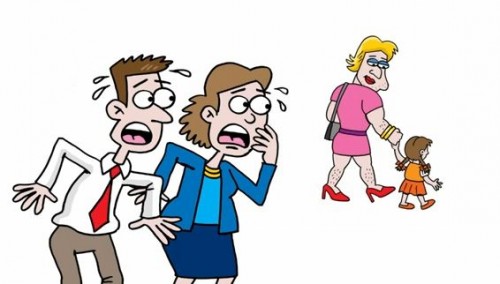Cross-posted at PolicyMic.
In this clip from a campaign rally, Vice Presidential nominee Paul Ryan argues that “traditional marriage” is a “universal human value.”
Ryan could not be more wrong. In fact, few practices have undergone more fundamental transformation.
For thousands of years, marriage served economic and political functions unrelated to love, happiness, or personal fulfillment. Prior to the Victorian era, love was considered a trivial basis for marriage and a bad reason to marry. There were much bigger concerns afoot: gaining money and resources, building alliances between families, organizing the division of labor, and producing legitimate male heirs.
These marriages were patriarchal in the strictest sense of the term. Men were heads of households and women were human property, equivalent to children, slaves, servants, and employees. Women didn’t choose to enter a marriage that defined her as property, she was entered into the marriage by her father, who owned her until he “gave her away.”
Ultimately, in response to feminist activism as well as other forces, marriage would change. By the 1950s, a new kind of marriage would become ideal. This is the one that Ryan likely means when he uses the terms “traditional” and “universal.” In this model, men and women married by choice and were expected to find sustenance in their relationship. Women were not legally subordinate to their husbands (that is, she was no longer property). But the rights and responsibilities of husbands and wives continued to be defined differently. Women owed men domestic services (cleaning, cooking, childcare, and sex); in return, men were legally required to support their wives financially.
This type of marriage signed its own death warrant, a story I’ll tell in another post, and was relatively short-lived (and not at all universal, even at its peak in the U.S.). It was soon replaced by an ideal of marriage based on gender-neutral roles that spouses could work out for themselves. Today married couples are free to organize their lives however they wish. And they do. Stephanie Coontz, famed historian of marriage, writes:
Almost any separate way of organizing caregiving, childrearing, residential arrangements, sexual interactions, or interpersonal redistribution of resources has been tried by some society at some point in time. But the coexistence in one society of so many alternative ways of doing all of these different things—and the comparative legitimacy accorded to many of them—has never been seen before.
Ryan is right, then, in that “traditional marriage,” however you define it, is not normal in the U.S. He’s completely wrong, though, it calling it universal. Even a quick review of American history reveals it not to be so.
Sources:
- Coontz, Stephanie. 1992. The Way We Never Were: American Families and the Nostalgia Trap. New York: Basic Books.
- Coontz, Stephanie. 2004. The World Historical Transformation of Marriage. Journal of Marriage and Family66, 4: 974-979.
See also The Daily Show on nostalgia, the “traditional” age of marriage, and mocking “traditional marriage.”
Lisa Wade, PhD is an Associate Professor at Tulane University. She is the author of American Hookup, a book about college sexual culture; a textbook about gender; and a forthcoming introductory text: Terrible Magnificent Sociology. You can follow her on Twitter and Instagram.




















